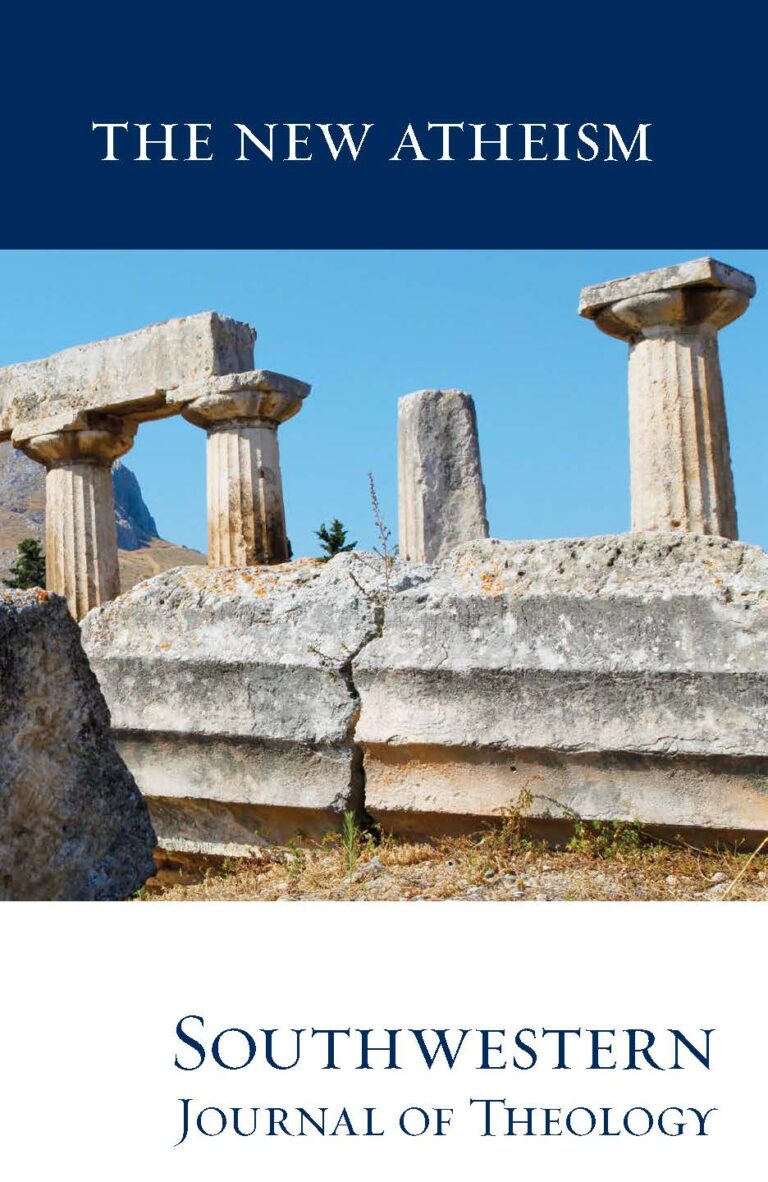
The New Atheism
Southwestern Journal of Theology
Volume 54, No. 1 – Fall 2011
Managing Editor: Malcolm B. Yarnell III
By Keith Warrington. Edited by Alec Motyer and John Stott. Downers Grove: IVP Academic, 2009. 288 pages. Paperback, $18.00.
Keith Warrington is the Vice-Principal and Director of Doctoral Studies at Regents Theological College in Cheshire, England. His background in missions work with Operation Mobilisation and pastoral experience at Ilkeston, Derbyshire and Bootle, Merseyside, as well as his self-proclaimed Pentecostal position are evident in this work in the Bible Speaks Today series (13).
Warrington claims that “the primary focus of this book is not the development of a dogmatic theology of the Spirit,” but rather “a theological exploration, practical, and biblically based,” which challenges readers to “apply” the “practical relevance” of the material (12–14, 245, 249). While at first glance the book appears to be a study of the Spirit in the Old and New Testaments, it is actually arranged topically as well as biblically such that, “each chapter is a separate exploration of an issue relating to” the Spirit (14). In each issue, Warrington emphasizes some combination of three characteristics of the Spirit: (1) the inexplicability of the Spirit, (2) personal encounters with the Spirit, and (3) the Spirit’s affirmation of the believer’s soteriological status as more important than His empowerment (12, 245). The idea of “inexplicability” seems to be that believers are invited to explore the Spirit but can never completely know Him (12, 16–17, 29, 249). These issues and characteristics are explored in four sections, including the Spirit in the: Old Testament, the Gospels, Acts, and the Epistles. As a major theme of the book, Warrington argues that since the Spirit leads believers into suffering as part of the fulfillment of their commission to preach the gospel, then they should look for His support to endure rather than remove suffering (76–84, 127–28, 169–70, 174).
The major contribution that Warrington makes to studies on the Spirit is his practical application of the material. In addition, pastors and teachers will appreciate his illustrations, some of which are from the internet in the late 1990’s to early 2000’s (174, 225–26), and others that are original (188, 243, 246). Another contribution of his work to the field of pneumatology is his biblically based discussion of the major pneumatological controversies from a conservative Pentecostal perspective that seems corrective of earlier and more radical interpretations. For example, in his discussions of tongues and spiritual gifts, he claims respectively that “the Spirit is interested in inclusion” (141) and “manifestation of ‘spiritual gifts’ does not indicate a superior spirituality” (180), which seems corrective of the exclusive two-tiered spirituality that still exists in some churches as a result of the doctrine of subsequence. His exegesis is nontechnical so that pastors and laypeople can easily understand it, yet still insightful so that academics can benefit from it.
The book’s bibliography (10) seems selective and is necessarily supplemented by numerous other sources in the work’s footnotes (cf. esp. 13–14). Following his Pentecostal position, Warrington’s sources seem weighted toward the PentecostalCharismatic view (10), but are counterbalanced by the numerous footnotes in the text referring to other views (87, 179, 189, 210). His bibliography and book are disproportionately focused on the New Testament with approximately only seventeen pages given to the Spirit in the Old Testament (20–22, 35–48) and with Matthew, Mark, and the General Epistles excluded from the study. His qualification of conducting a topical study may excuse these exclusions (14). However, attention to the works of Congar, Warfield, and Montague would help to round out his bibliography and expand his section on the Spirit in the Old Testament. Perhaps attention to James Hamilton’s God’s Indwelling Presence may contribute to Warrington’s study of John (chapters 7–9), since he touches on all three of Hamilton’s main passages, John 7:39; 14:17; 16:7 (10, 85–117).
While Warrington’s work is a good source for discovering Pentecostal theology, non-Pentecostals and non-Charismatics will find some of his conclusions troubling. In his discussion of spiritual gifts, Warrington, like Wayne Grudem, takes the “mediating position” that “a gift of the Spirit may be a natural gift that has been invested with supernatural energy by God,” but some non-Pentecostal and non-Charismatics will find this view difficult since they seem to maintain a clearer distinction between spiritual gifts and natural abilities (48, 181–82). In his discussion of the Spirit’s guidance (prophecy), Warrington attempts to preserve the ZwingliCalvin Word-Spirit correlation (which was explicitly formulated to counteract the teachings of the enthusiasts of their time) but ultimately violates it by claiming that the Spirit reveals information not present in the Word and does so even after the close of the canon to the present (143–47). Many non-Pentecostal and nonCharismatics will be troubled by this view, as some believe it violates at least the sufficiency, authority, and inerrancy of Scripture. In fact, just after making the claim for “extrabiblical revelation” Warrington appears to deny inerrancy by claiming that the Spirit “provided particular guidance to local churches that differed from messages offered to others” (emphasis added, 147–48).
At the end of the book, Warrington provides a study guide with good application questions that also serves as a helpful summary overview of each chapter.





